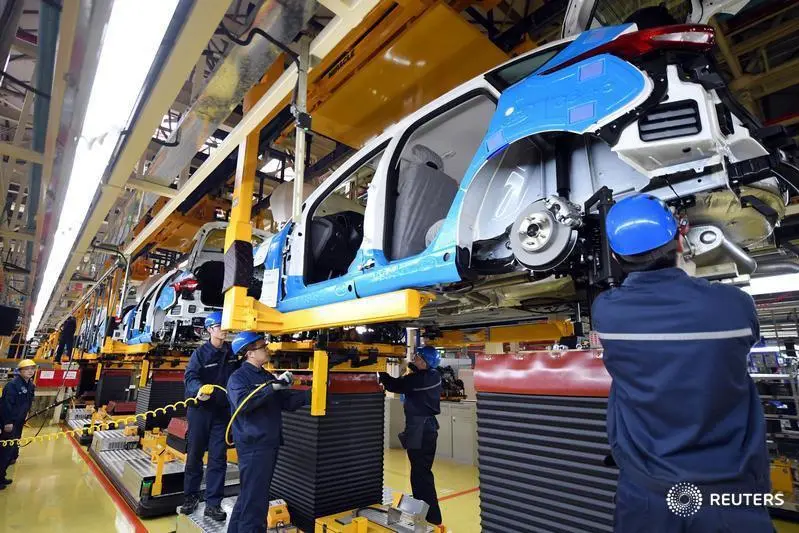PHOTO
WASHINGTON- U.S. factory output increased for a second straight month in June as motor vehicle production accelerated amid the reopening of businesses, but the nascent improvement in manufacturing activity was overshadowed by surging new COVID-19 infections.
The Federal Reserve said on Wednesday manufacturing production increased 7.2% last month after climbing 3.8% in May. Still, factory output was 11.1% below its level in February.
Economists polled by Reuters had forecast manufacturing output rising 5.6% in June.
Businesses have resumed operations after being shuttered in mid-March in an effort to slow the spread of the coronavirus.
But there has been a resurgence in new infections of the respiratory illness, especially in the highly populated South and West, prompting some authorities in these regions to either shut down businesses again or pause reopenings.
Production at factories contracted at a 47.0% annualized rate in the second quarter after falling at a 5.5% pace in the January-March period. Manufacturing, which accounts for 11% of the U.S. economy, is also being constrained by the fallout from the Trump administration's trade war with China.
Global supply chains remain fragile and demand for crude oil is weak, leading to lower prices that are undercutting spending by oil producers on drilling and shaft exploration equipment. Economists expect business spending to have contracted in the second quarter, the fifth straight quarterly decline.
Motor vehicles and parts production vaulted 105.0% in June after rising 120% in May. Still auto production remained nearly 25% below its pre-pandemic level.
The surge in manufacturing output combined with a 4.2% increase in utilities to offset a 2.9% slump in mining, leading to a 5.4% rise in industrial production in June. That followed a 1.4% gain in May. Industrial production contracted at a 42.6% rate in the second quarter, the largest decline since World War II, after decreasing at a 6.8% pace in the first quarter.
Capacity utilization for the manufacturing sector, a measure of how fully firms are using their resources, rose 4.6 percentage points to 66.9% in June. Overall capacity use for the industrial sector rose 3.5 percentage points to 68.6%. It is 11.2 percentage points below its 1972-2019 average.
Officials at the Fed tend to look at capacity use measures for signals of how much "slack" remains in the economy — how far growth has room to run before it becomes inflationary.
(Reporting by Lucia Mutikani; Editing by Chizu Nomiyama and Andrea Ricci) ((Lucia.Mutikani@thomsonreuters.com; 1 202 898 8315; Reuters Messaging: lucia.mutikani.thomsonreuters.com@reuters.net))












